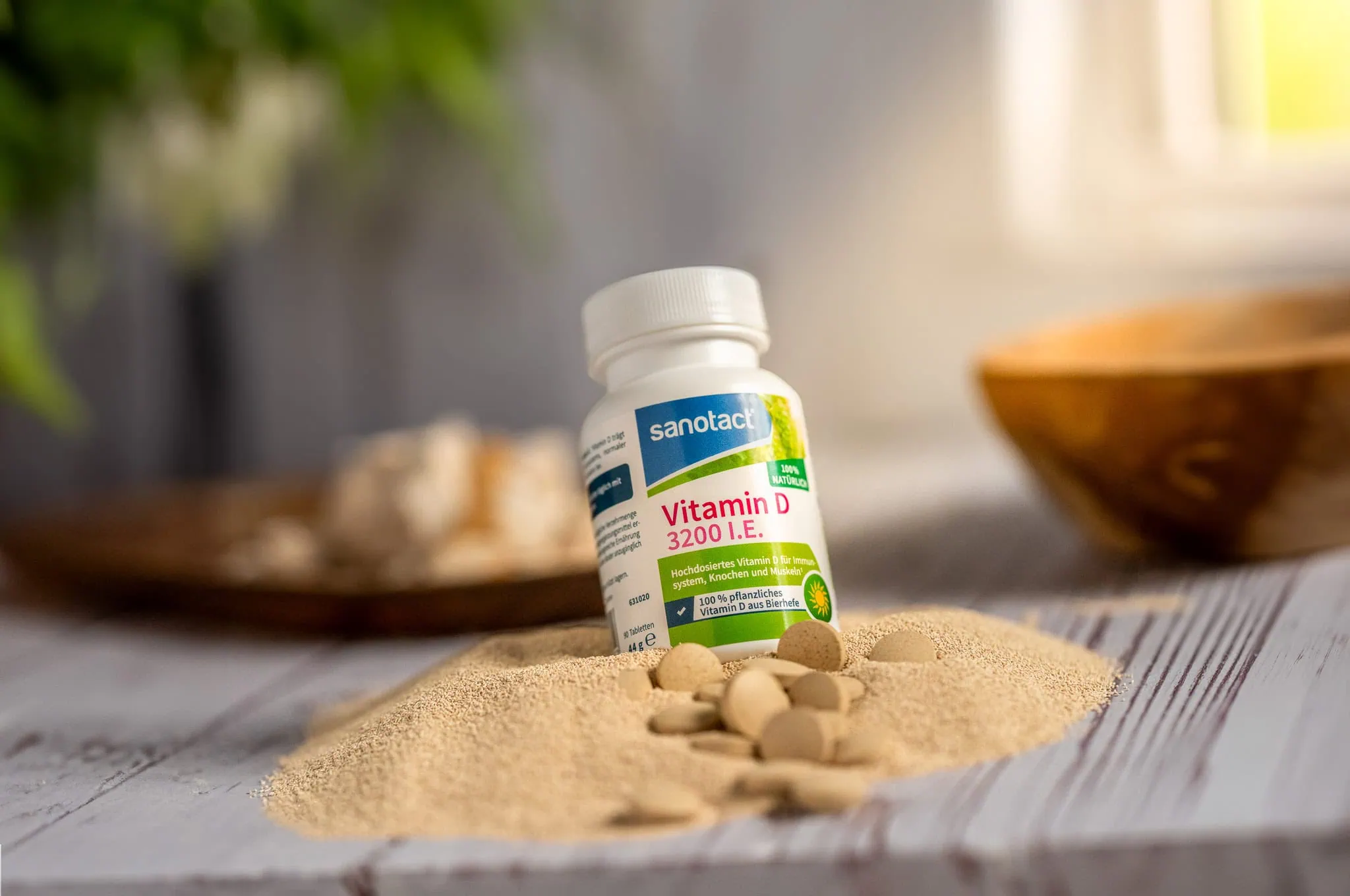Vitamin D – the sunshine vitamin
Vitamin and mineral lexicon
Vitamin D occupies a special position among the vitamins. Because our body can produce the fat-soluble vitamin itself in the skin. To do this, it depends on sufficient sunlight, or more precisely UVB rays. But the body’s own production of vitamin D varies from person to person and depends on factors such as the season or skin type. Anyone who regularly spends time outdoors, especially in the summer months, can cover a large part (up to 80-90 percent) of their vitamin D supply through their own body production. However, if the sun’s rays are not strong enough, the sun is avoided for various reasons or the body’s ability to produce the sun vitamin is reduced, the importance of vitamin D intake through the diet or as a dietary supplement increases.

How can a vitamin D deficiency occur?
In the months from October to March, solar radiation in Germany is usually not strong enough to ensure sufficient vitamin D production, so the body relies on existing vitamin D stores. In addition to the time of year and day, there are also other factors that influence the body’s production of vitamin D:
weather
Place of residence,latitude
Length of stay outdoors
Increased age
Darker skin types
Skin-covering clothing
Use of sunscreen
Risk groups for vitamin D deficiency
Therefore, the contribution of the body’s own production to the vitamin D supply can vary greatly from person to person. The risk groups for undersupply include people who spend little or no time outdoors or are unable to do so – such as people with limited mobility, people who are chronically ill and in need of care, or even older people. In the latter case, the skin’s ability to produce vitamin D becomes increasingly difficult as we get older. Compared to younger age, this ability is sometimes reduced to less than half. In addition, people with dark skin type are among the risk groups. Due to the higher content of the pigment melanin in the skin, vitamin D production is lower. In order to produce the same amount of vitamin D, people with darker skin types have to spend longer in the sun. Another risk group are people who only go outside fully clothed – be it for cultural or religious reasons. All of these living conditions can promote an undersupply of vitamin D and make additional intake useful.
Risk groups:
- People who are rarely outside
- Older people
- People with dark skin type
- People who only go outside fully clothed
Symptoms of a vitamin D deficiency – consequences of undersupply
The exact definition of a vitamin D deficiency is still being debated. However, it is known that almost 60 percent of the federal population do not achieve the desirable vitamin D stores (blood concentration of 25-hydroxyvitamin D of ≥ 50 nanomoles per liter or ≥ 20 nanograms per milliliter). For example, many citizens cannot take advantage of the preventative potential of vitamin D for bone health – reducing the risk of falls and bone fractures – because they are not adequately supplied with it. If there is a significant vitamin D deficiency, this can manifest itself in disorders of bone metabolism and symptoms such as reduced muscle strength and increased susceptibility to infections.


